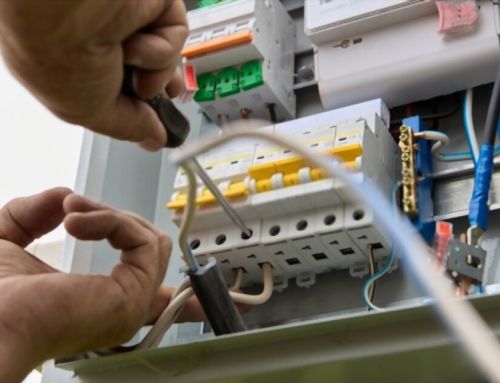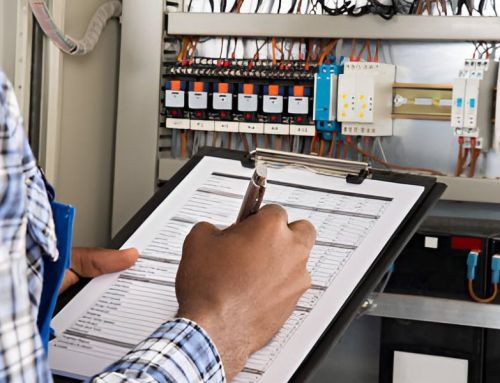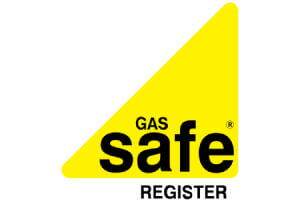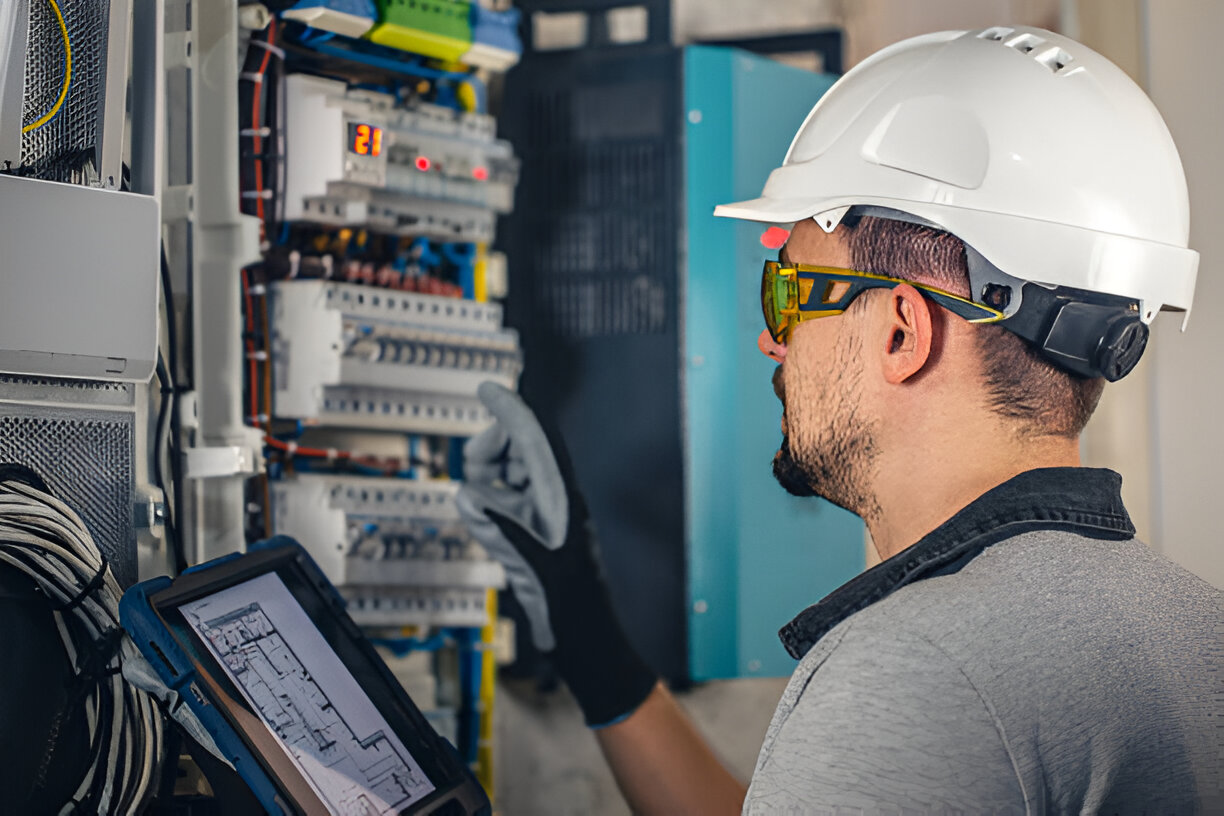
The Electrical Installation Condition Report (EICR) is a critical evaluation required to ensure the safety and compliance of electrical installations in any property. Conducted by certified professionals, this test scrutinizes various components of an electrical system, from wiring safety to the functionality of circuit breakers and sockets. While many understand its basic premise, the specifics of what the EICR entails and the nuanced criteria it assesses are less commonly known.
Understanding the depth and implications of this assessment can significantly impact property management and safety standards. What then, are the elements that make this assessment indispensable in maintaining electrical integrity?. Let explore What Is an Eicr Electrical Test.
EICR meaning
An Electrical Installation Condition Report (EICR) is a formal document produced following a thorough assessment of the electrical systems and installations within a building. This inspection is crucial for ascertaining the safety and compliance of the electrical installations with current electrical standards.
The EICR is instrumental for property owners, facility managers, and safety inspectors to understand the condition of electrical systems and to ensure that they are free from any defects that could lead to safety hazards.
The significance of the EICR extends beyond mere compliance. It fundamentally serves as a preventive measure, identifying potential electrical issues before they escalate into major problems.
This report lists any observed damage, deterioration, defects, and non-compliances with the prevailing safety standards, thereby facilitating timely rectifications. It also provides a detailed account of the installation’s condition, offering insights into areas that may require future monitoring or immediate action.
Moreover, the EICR is often a mandatory requirement in many regions for insurance purposes, real estate transactions, and legal compliance in commercial settings.
It reassures all stakeholders of the electrical safety and integrity of the property, thus playing a critical role in the preventive maintenance schedule of any facility.
EICR test procedure
The EICR test procedure begins with a comprehensive assessment of the electrical installation by a qualified electrician. This initial stage involves a detailed examination of the electrical circuits and equipment to identify any visible signs of deterioration, damage, or non-compliance with the current IET Wiring Regulations.
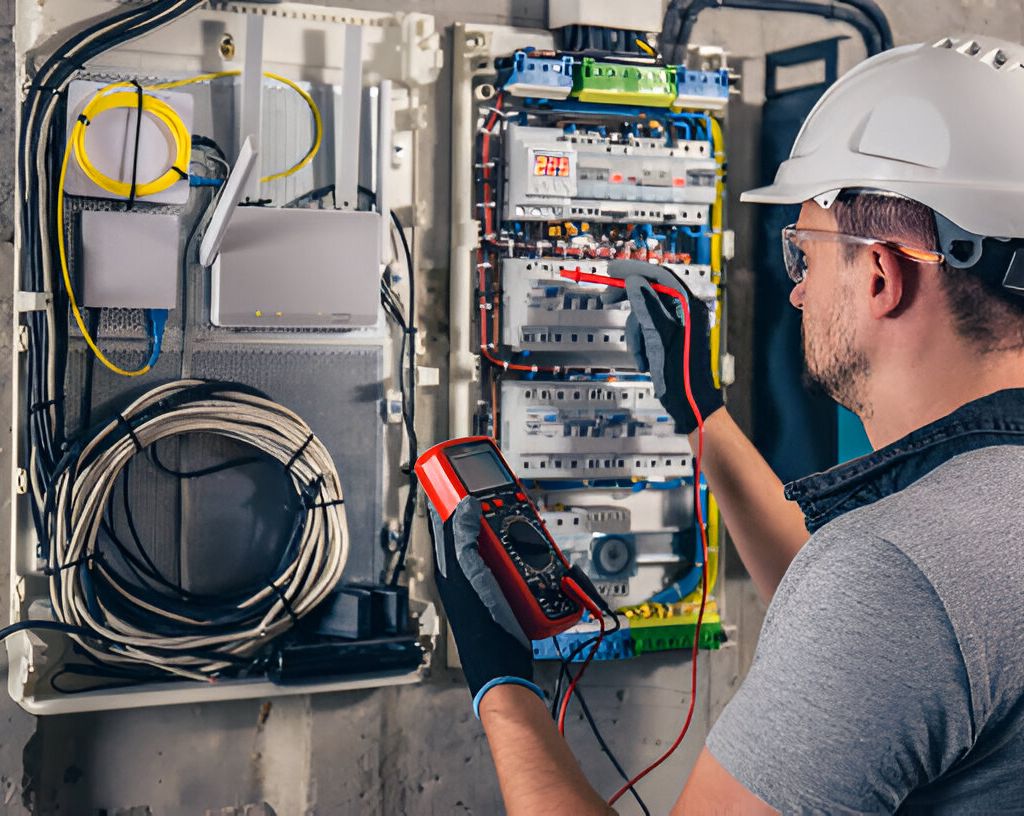
The assessment extends to ensuring that all electrical components, including switches, sockets, and fixtures, are properly secured and functionally intact.
Following the visual inspection, the electrician performs a series of electrical tests. These tests are critical and include insulation resistance testing, which checks for any possible insulation breakdown that can lead to electrical shocks or fires.
Earth fault loop impedance testing is also conducted to verify the effectiveness of the earthing system, a crucial factor in the safety of the electrical installation. Additionally, the procedure involves testing the RCDs (residual current devices) to ensure they trip under fault conditions, safeguarding against electric shock.
The electrician then compiles the data, analyzing the results to identify deviations from the norms that could suggest potential or existing issues.
This meticulous analysis is essential to ascertain the overall safety and compliance of the electrical installation before concluding the EICR process.
EICR test checklist
Completing an Electrical Installation Condition Report (EICR) requires a meticulous checklist to ensure all aspects of the electrical system are evaluated thoroughly.
This checklist serves as a comprehensive guide for qualified electricians to assess the safety and efficiency of electrical installations in a property.
The checklist includes several key components:
- Verification of Earthing and Bonding: Inspectors assess the adequacy of earthing and examine whether bonding requirements meet the regulatory standards.
- Consumer Unit Examination: The condition, type, and compatibility of the consumer unit and any alterations are checked to ensure compliance with current regulations.
- Circuit Inspection: Each circuit is individually test+ed for integrity and safety, including checks for overcurrent protection and circuit breakers’ condition.
- Visual Inspection: A thorough visual inspection identifies any visible signs of damage, wear, or potential electrical hazards in the installation.
- Testing Electrical Components: This includes polarity testing, insulation resistance measurements, and earth fault loop impedance testing.
- Final Assessment: The overall condition of the electrical installation is evaluated, noting any deviations from the national safety standards.
This detailed evaluation ensures that the EICR provides a reliable and accurate assessment of the electrical safety in a property.
EICR test cost
Considering the complexities involved in conducting an Electrical Installation Condition Report (EICR), the cost can vary significantly depending on several factors. Key determinants include the size and age of the electrical installation, the type of property being inspected, and the geographic location of the premises.
Studio Bedroom |
1-3 Bedrooms | 4 Bedrooms | 5 Bedrooms |
| £67.99* *All inclusive (No hidden Cost) |
£94.99* *All inclusive (No hidden Cost) |
£104.99* *All inclusive (No hidden Cost) |
£139.99* *All inclusive (No hidden Cost) |
For instance, larger properties or those with older, more intricate wiring systems often require more extensive examination, thereby increasing the expense.
The professional expertise of the electrician also plays a crucial role in the pricing structure. Certified and experienced electricians may charge a premium due to their expertise, which ensures a thorough and compliant inspection.
Furthermore, regional variations in labor costs can affect the overall price, with rates generally higher in metropolitan areas compared to rural settings.
Typically, the cost for an EICR can range from £150 for a small residential property to over £500 for larger commercial facilities.
It’s advisable for property owners to obtain multiple quotes to find a balance between cost and quality. Ensuring the electrician is accredited by a recognized industry body provides assurance that the inspection will meet the rigorous standards required for safety and compliance.
What does a 5 year electrical test involve
Moving from the discussion of EICR test costs, we now explore the specifics of a 5-year electrical test, formally known as the Periodic Inspection. This comprehensive assessment is designed to ensure the safety and efficiency of an electrical installation, typically for commercial establishments but also applicable to residential properties.
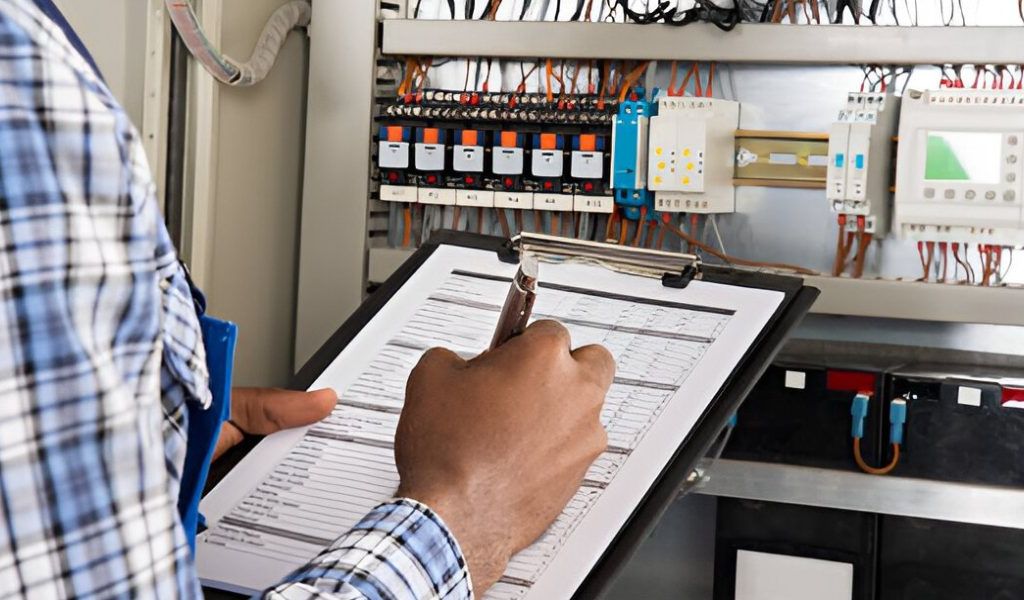
What Is an Eicr Electrical Test
The process involves a detailed examination of all electrical systems and components to identify any defects, deterioration, or deviations from the Wiring Regulations.
The Periodic Inspection covers several key areas: the adequacy of earthing and bonding, the suitability of switchgear and control gear, the serviceability of switches, sockets, and light fittings, and the type of wiring system and its condition.
The test also evaluates the extent of any wear and tear, corrosion, or other damage that might compromise the safety or functionality of the electrical installation.
An inspector will assess the presence of residual current devices (RCDs) for sockets that could supply portable equipment outdoors and the visibility and condition of labels at consumer units and distribution boards.
The findings are documented in a detailed report, which highlights any observed deficiencies and recommends necessary actions to address them.
This report is crucial for maintaining compliance with current electrical standards and ensuring ongoing safety.
Does an EICR test every socket
An Electrical Installation Condition Report (EICR) does not necessarily test every socket within a property. The scope of an EICR is to assess the overall safety and condition of an electrical installation, rather than the functionality of every individual socket. The process typically involves a representative sampling of electrical points, including sockets, to identify any visible signs of deterioration, damage, or non-compliance with the prevailing wiring standards. This sampling method is deemed sufficient to provide an accurate reflection of the system’s condition.
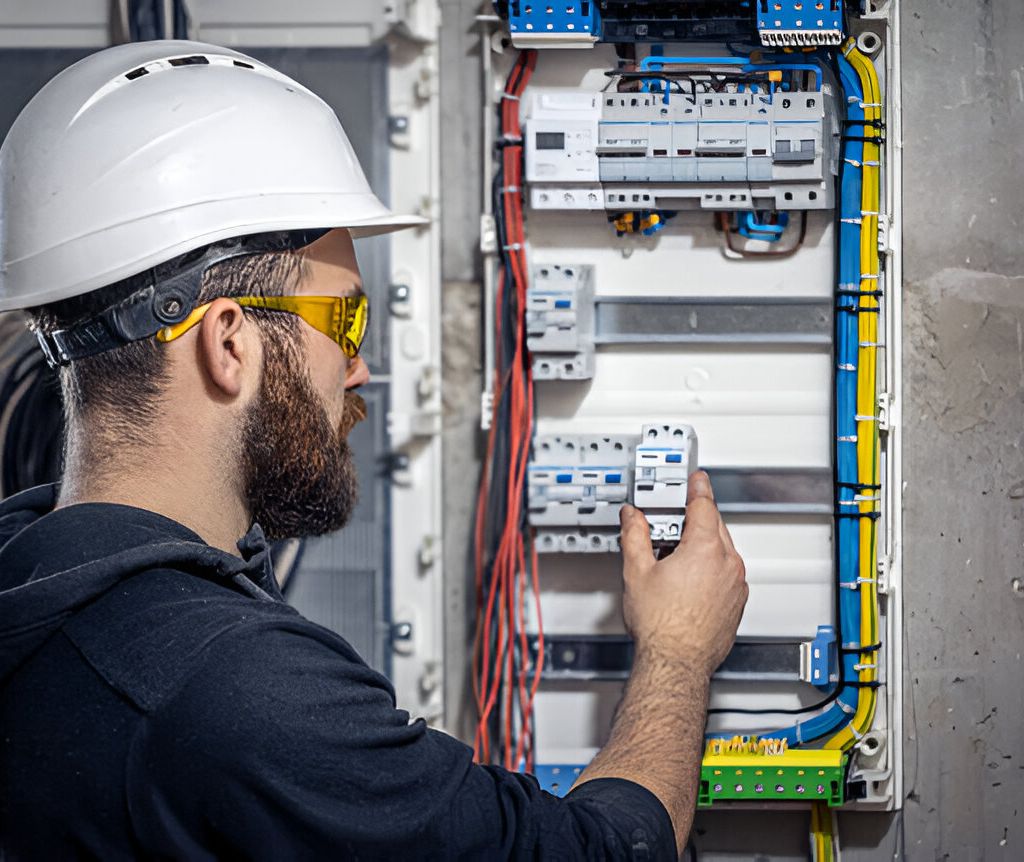
The decision on which sockets are tested is guided by the electrician’s professional judgment, taking into account factors such as the age of the installation, its usage, and any previous modifications or reported issues. Areas that are likely to experience higher wear or pose greater risks, such as kitchens and bathrooms, might be scrutinized more thoroughly.
However, it is important to note that even though not every socket is tested, critical safety checks are performed on the circuitry that connects these sockets, ensuring a comprehensive evaluation of the system’s safety and functionality.
This strategic approach allows for efficient testing while ensuring significant areas of concern are addressed, maintaining robust safety standards without necessitating exhaustive checks of each socket.
Frequently Asked Questions
Can Tenants Request an EICR for Their Rental Property?
Yes, tenants can request an Electrical Installation Condition Report (EICR) for their rental property to ensure electrical systems meet safety standards. Landlords are legally required to provide a safe environment, including compliant electrical installations.
How Does an EICR Impact Home Insurance Rates?
An Electrical Installation Condition Report (EICR) can positively influence home insurance rates by demonstrating adherence to safety standards, potentially reducing premiums due to lowered risk assessments by insurance providers.
What Qualifications Must an Electrician Have to Perform an Eicr?
To perform an Electrical Installation Condition Report, electricians must be qualified, typically requiring a Level 3 NVQ in Electrotechnical Services or equivalent, and be registered with a competent persons scheme, ensuring adherence to safety standards.
Is an EICR Mandatory for Commercial Properties?
Yes, an EICR is mandatory for commercial properties in the UK to ensure compliance with the Electricity at Work Regulations 1989, aiming to maintain electrical systems’ safety and prevent potential hazards.
What Are the Consequences of Ignoring EICR Recommendations?
Ignoring EICR recommendations can lead to severe safety risks, potential legal consequences, and invalidated insurance claims. Non-compliance may result in fines and jeopardize the integrity of electrical systems, posing hazards to occupants and property.
Conclusion
In conclusion, an Electrical Installation Condition Report (EICR) is a critical assessment designed to ensure the safety and compliance of electrical installations within a property. By systematically evaluating the integrity of electrical systems through a series of standardized tests, the EICR helps in identifying potential electrical hazards, thereby safeguarding occupants and ensuring compliance with legal standards. Regular completion of EICR tests is essential for maintaining electrical safety and preventing potential system failures.
About the Author: LandlordCertificate
Related Posts
Get Social
Recent Posts
- Fire Risk Assessment Review as a Driver of Stronger Safety Control
- Comprehensive EICR London Services for Every Property
- System Planning for Large Buildings with Fire Alarm Installation
- Fire Service Fire Risk Assessment for Stronger Safety Management
- Electrical Risk Clarity Improved Through an EICR Report


